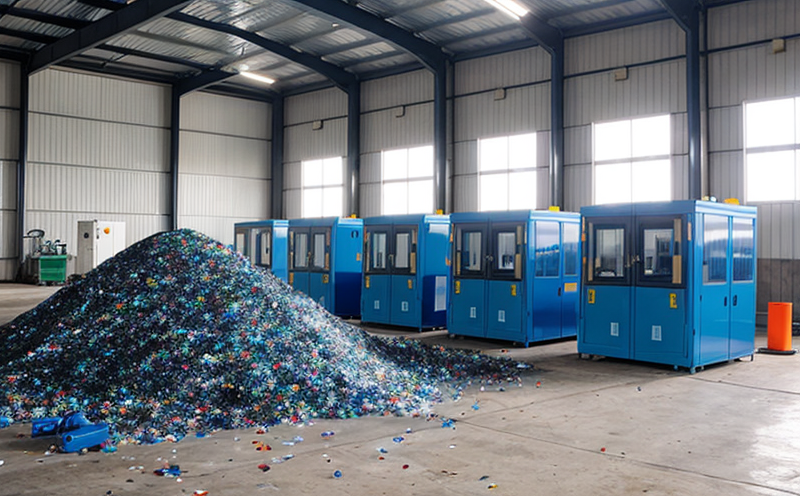EN 15349 Recycled PVC Material Assessment
The European Standard EN 15349 is a crucial document that provides guidelines for assessing the quality of recycled polyvinyl chloride (PVC) materials. This standard ensures that recycled PVC meets stringent requirements, which are essential for maintaining product integrity and environmental sustainability. The assessment process outlined in this standard involves several key steps including material characterization, mechanical testing, chemical analysis, and physical property evaluation.
The scope of EN 15349 extends beyond mere compliance; it aims to enhance the overall quality of recycled PVC by providing a comprehensive framework that covers all aspects from raw materials sourcing to final product performance. This ensures that end-users receive products that not only meet regulatory requirements but also perform reliably under various conditions.
In terms of specimen preparation, EN 15349 specifies detailed procedures for cutting samples and conditioning them before testing. These steps ensure consistency across different batches and laboratories, thereby reducing variability in test results. The standard emphasizes the importance of accurate measurement techniques during all phases of evaluation to produce reliable data.
One critical aspect highlighted by EN 15349 is the need for precise mechanical testing. This includes tensile strength tests, impact resistance assessments, flexural modulus measurements, and other relevant metrics that help determine how well a particular batch of recycled PVC will hold up under stress. Additionally, chemical analyses are conducted to check for trace contaminants such as heavy metals or persistent organic pollutants (POPs), which could affect product safety and environmental impact.
Physical property evaluations form another important component of this assessment process. These tests measure attributes like density, water absorption rate, and thermal stability, providing insights into the material's suitability for specific applications. For instance, if you're producing pipes or flooring products from recycled PVC, understanding these properties is crucial for ensuring longevity and performance.
The standard also addresses issues related to color consistency and appearance, which are particularly important in sectors like packaging where aesthetics play a significant role in consumer acceptance. By addressing these factors comprehensively, EN 15349 helps manufacturers achieve consistent quality across production runs while promoting recycling practices that benefit both economic efficiency and environmental protection.
It's worth noting that while this standard focuses primarily on recycled PVC, its principles can be adapted to other types of plastics as well. This flexibility allows organizations involved in mixed plastic recycling programs to apply similar standards tailored specifically towards their unique needs and challenges.
| Application | Description |
|---|---|
| Pipe Manufacturing | Ensures durability and leak resistance in underground infrastructure. |
| Flooring Materials | Guarantees wear resistance and easy maintenance for commercial spaces. |
| Contributes to lightweight, flexible packaging that minimizes material use. | |
| Construction Accessories | Supports the development of sustainable building components. |
Why It Matters
Adhering to EN 15349 is not just about meeting regulatory expectations; it's a commitment to excellence in recycling practices. By ensuring that every batch of recycled PVC meets the stringent requirements set forth by this standard, manufacturers can build trust with customers who value sustainability and quality.
This standard plays an integral role in fostering innovation within the industry by encouraging R&D efforts aimed at improving recycling techniques and expanding material capabilities. For procurement teams, compliance with EN 15349 ensures they are sourcing high-quality recycled PVC from reliable suppliers, supporting sustainable supply chains.
Moreover, adherence to this standard helps reduce waste sent to landfills while promoting circular economy principles. Organizations that adopt these practices contribute positively towards reducing carbon footprints and enhancing environmental stewardship.





